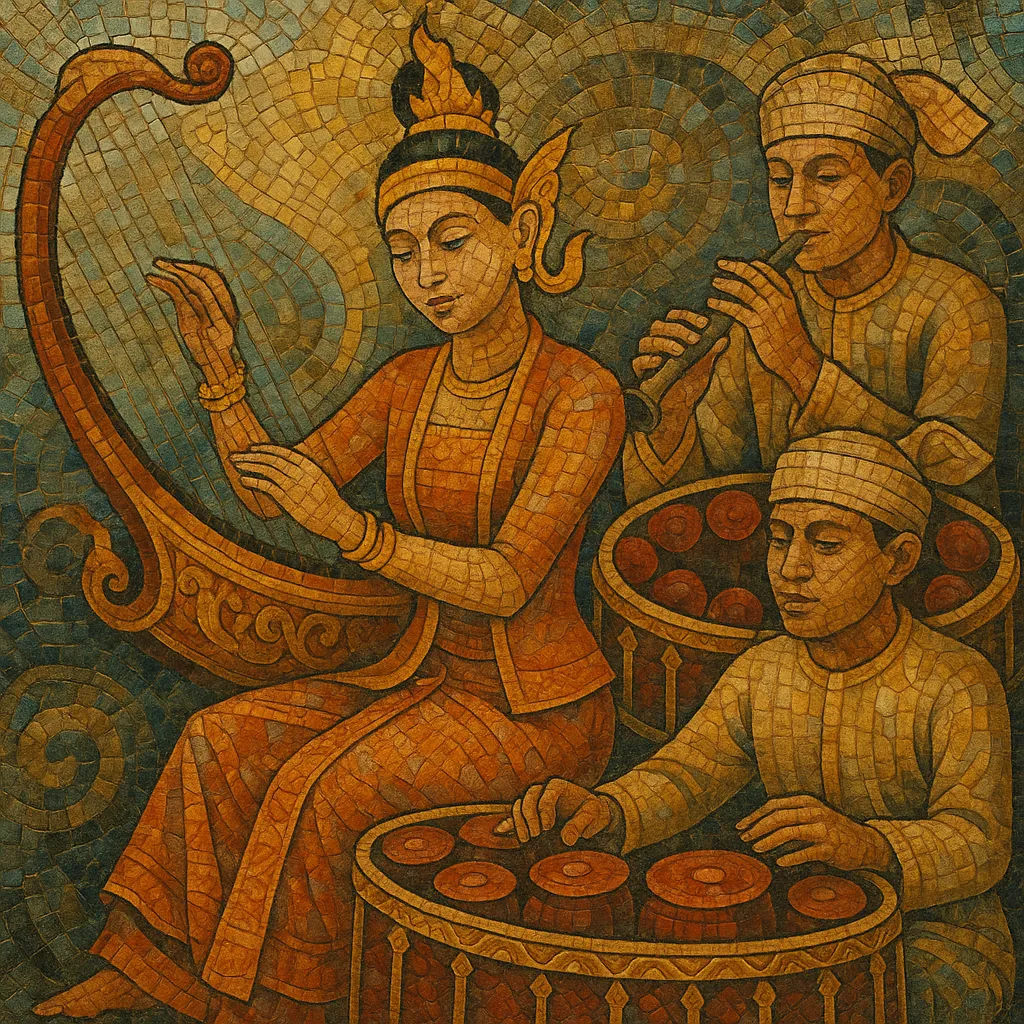Burmese classical music (often associated with the courtly Mahāgīta repertoire) is the refined art music of Myanmar. It crystallized under the Konbaung Dynasty, drawing on older Mon and regional court traditions, and is performed in two principal contexts: intimate vocal–chamber settings centered on the saung gauk (Burmese arched harp) and larger ceremonial hsaing waing percussion ensembles.
Its musical texture is characteristically heterophonic: a principal vocal or melodic line is elaborated simultaneously by instruments through ornamentation and flexible timing. Melodic materials are largely pentatonic or hemitonic, with intricate grace-notes and melismas. Rhythm moves in cyclical patterns articulated by time-keeping instruments (the bell si and clapper wa) in chamber music, or by the pat waing drum-circle and gong racks in hsaing waing.
Core timbres include the saung gauk (harp), pattala (bamboo xylophone), hne (double-reed oboe), pat waing (21-drum circle), kyi waing and maung hsaing (small and large bossed-gong circles), as well as small idiophones like si and wa. Repertoires range from expansive court songs (thachin gyi) and lyrical airs to dance-accompaniment pieces and narrative items connected with classical theater.
Burmese classical music coalesced in the royal courts, especially under the Konbaung Dynasty (18th–19th centuries). While drawing on earlier Burmese and Mon court practices, it absorbed styles from neighboring polities through diplomacy, conflict, and migration—most notably Siam/Ayutthaya after 1767. The aristocratic environment fostered repertory codification and the rise of master-composers and poet-musicians who shaped the Mahāgīta corpus.
Across the 18th and 19th centuries, extensive vocal repertoires of court songs took shape, prized for poetic craft and controlled ornamentation. Parallel instrumental traditions developed in chamber contexts (centered on the saung gauk harp and pattala xylophone) and in the hsaing waing ensemble for court ceremonies, theater, and dance. A distinctly heterophonic approach, cyclical rhythm, and flexible timing for vocal declamation became hallmarks of style.
Under British colonial rule, court patronage waned, but master musicians maintained lineages through teaching, new media (print, radio), and performance societies. Notation, collections, and recordings helped stabilize and transmit repertoire. The music adapted to salons, cultural associations, and modern stages while preserving core instruments, forms, and performance practice.
After independence, conservatories, university departments, broadcasting orchestras, and cultural troupes supported training and performance. International tours and collaborations (notably by hsaing waing and harp masters) brought broader visibility. Today, Mahāgīta and ensemble traditions remain living arts taught within formal institutions and apprenticeships, heard at ceremonies, theaters, and concerts, and increasingly documented for preservation and scholarship.


